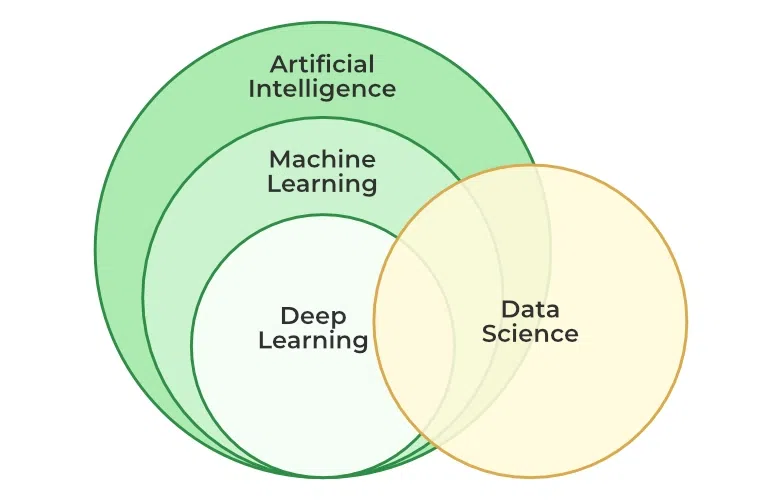
Artificial intelligence was formerly reserved for the world’s most bright scientists and kept in the world’s most advanced laboratories.

AI is now available to anybody with an internet connection. ChatGPT, Voice.ai, DALL-E, and other tools have pushed artificial intelligence into everyday life, yet the language used to describe their capabilities and inner workings is only sometimes mainstream.
Here are five popular words you’ll probably hear in the same sentence as your favorite AI tool, on the nightly news, or at the water cooler. Keep this AI dictionary handy to remain up to date on this popular (and occasionally contentious) topic.
AI-generated content
AI-generated content is defined as any piece of written, audio, or visual material made partially or entirely by an artificial intelligence-powered technology.
If someone employs artificial intelligence to develop anything, it does not always imply that they cheated or cut shortcuts. When constructing outlines, accumulating thought-starters, or looking for a new perspective on a topic, AI is frequently a good place to start.
AI hallucination
When you pose a question to an AI, it may not necessarily confess that it does not know the answer. So, instead of not responding, it will create one up that it believes you want to hear. This made-up answer is referred to as an AI hallucination.
One real-world example of an expensive AI hallucination happened in New York when a lawyer utilized ChatGPT to prepare a brief. The brief appeared full and referenced its sources, yet they were all there.1 It was all a product of the AI’s “imagination.”
AI Black Box

To understand the phrase “black box,” consider the AI as a system of gears, pulleys, and conveyer belts contained within a box. A see-through box allows you to view how the input is translated into the finished result; nonetheless, some AIs are referred to as black boxes.
That implies you need to learn how the AI reached its judgments. The AI totally conceals its thinking process. A dark box might be inconvenient if you want to double-check the AI’s work.
Deepfake

Deepfake is the alteration of a photo, video, or audio clip to show events that did not occur. Deepfake is frequently used for amusing social media skits and viral postings, but it is also utilized by unscrupulous individuals to promote false news stories or trick people.
People, for example, are putting politicians in unfavorable stances and backdrops for photographs. Sometimes, the deepfake is designed to make people laugh, while other times, the designer tries to spread rumors that might lead to protests or harm the photo subject’s reputation.
One way to detect a deepfake image is to examine the hands and faces of the individuals in the backdrop. Deepfakes frequently add or delete fingers and alter facial emotions.
Artificial intelligence-assisted audio impersonations, sometimes known as deepfakes, are becoming more credible. According to McAfee’s “Beware the Artificial Imposter” research, 25% of global respondents reported experiencing voice fraud, either themselves or someone they know. Seventy-seven percent of those targeted by voice scams lost money as a consequence.
Deep learning

The more closely an AI’s thinking process resembles the human brain, the more accurate the AI will be. Deep learning is the process of teaching artificial intelligence to reason and recall information in the same way that humans do, allowing the machine to recognize patterns and make predictions.
AI Explainable
The opposite of black box AI is explainable AI (also known as white box AI). An explainable AI model always demonstrates its process and how it arrived at its conclusion. Explainable AI can increase your trust in the result by allowing you to double-check what went into it.
Generative AI
Many of today’s prominent AI technologies, such as ChatGPT, Bard, and Craiyon, rely on generative artificial intelligence. Generative AI, like a sponge, absorbs massive quantities of data and uses it to shape each response it generates.
Machine learning
Machine learning is essential to AI since it allows it to learn and develop continuously. Without explicit instructions, machine learning in AI enables the AI to become smarter as it is utilized.
Responsible AI
People must not just utilize AI ethically; they must also develop and program AI properly. Technologists must guarantee that the AI’s data is correct and devoid of prejudice. This care is required to ensure that the AI’s output is accurate and without bias.
Sentient
Sentient is an adjective that indicates that someone or something is aware of feelings, experiences, and emotions. In futuristic AI films, the protagonists’ world falls apart as the robots become sentient or “feel” human-like emotions.
While it makes for compelling Hollywood drama, today’s AI needs to be made aware. It lacks empathy and understanding of the actual meanings of enjoyment, excitement, sadness, and fear.
So, even if an AI wrote a short narrative so lovely that it made you cry, the AI is unaware that what it did was moving. It was just satisfying a request and following a pattern to identify which word to select next.
SOURCE



